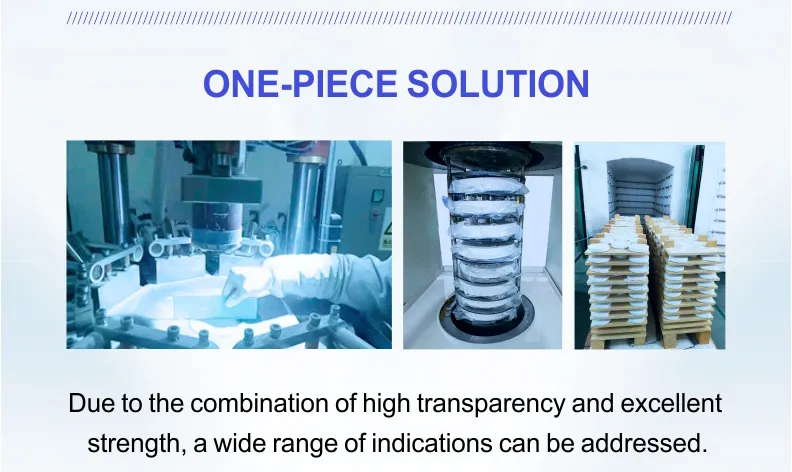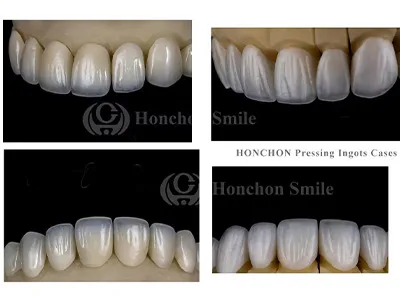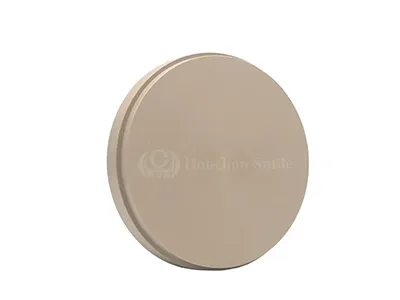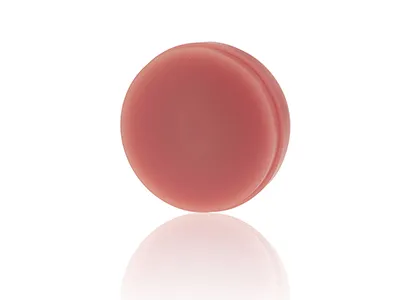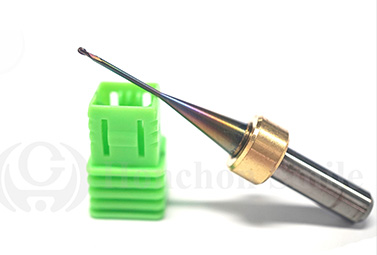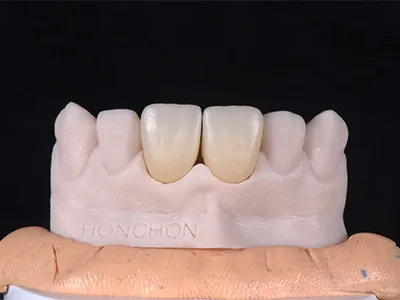Multilayer dental zirconia blocks: material innovation and clinical application explained
2025-11-19
Introduction of zirconia block
With the rapid development of restorative dentistry, zirconia ceramics have gradually become the core material in the field of all-ceramic restorations due to its excellent mechanical properties, biocompatibility and aesthetic effect. The birth of Multilayer Zirconia Blocks further breaks through the performance limitations of traditional single-layer zirconia, realizing “functional gradient” and “aesthetic biomimicry”. A perfect combination of “functional gradient” and “aesthetic biomimicry” has been realized. In this article, we will analyze the technical innovation and future direction of multilayer zirconia blocks from the dimensions of material science, preparation process, clinical application and industry trends.
I. Material properties and preparation technology: from microstructure to macro performance
1. Material science foundation: phase transition mechanism of yttria-stabilized zirconia (Y-TZP)
The mechanical properties of zirconia stem from its unique crystalline phase transition properties. Pure zirconia exists as a monoclinic phase (m-ZrO₂) at room temperature, but by adding yttrium oxide (Y₂O₃) as a stabilizing agent (usually at a content of 3-5 mol%), a substable tetragonal phase (t-ZrO₂) can be formed. When the material is stressed, t-ZrO₂ will be transformed to the monoclinic phase, accompanied by a volume expansion of about 3-5%, a process known as the phase transition toughening effect (Transformation Toughening), which can effectively inhibit crack propagation, and significantly improve the toughness of the material (fracture toughness of up to 5-10 MPa-m¹/²).
Multilayer dental zirconia blocks: material innovation and clinical application explained(图2)
The core of the multilayer design: a gradient structure is formed in the zirconia block by regulating the amount of yttrium oxide, aluminum oxide (Al₂O₃) or hafnium oxide (HfO₂):
Surface layer (enamel simulation layer): low yttrium oxide content (e.g. 3 mol% Y-TZP), high translucency (transmittance > 40%) and translucency, adapted to the aesthetic needs of the anterior teeth.
Middle layer (transition layer): gradient adjustment of yttrium oxide ratio (e.g. 4 mol%), balanced light transmission and strength.
Bottom layer (dentin simulation layer): high yttrium oxide content (e.g. 5mol% Y-TZP), flexural strength >1200MPa, suitable for high bite force area of posterior teeth.
2. Preparation process: from powder metallurgy to precision sintering
The manufacture of multilayer zirconia requires a blend of powder layered pressing and sintering processes:
Gradient powder pressing: Through multi-chamber injection molding technology, zirconia powders with different ratios are filled layer by layer to form a continuous transition in color and properties.
Cold Isostatic Pressing (CIP) and Hot Isostatic Pressing (HIP): CIP is pressurized (200-300MPa) at room temperature to increase the density of the billet (>2.8g/cm³); HIP is combined with air pressure (100-200MPa) at a high temperature (1400-1500℃) to eliminate the internal pores, so that the sintered The density of the body is close to the theoretical value (6.02g/cm³), and the light transmittance is increased by more than 30%.
Coloring and surface treatment: Natural tooth color gradient is achieved by ion doping of rare earth elements (such as cerium and praseodymium), or aesthetic effect is enhanced by penetration dyeing technology.
3. Key performance indicators and standardization requirements
Mechanical properties: flexural strength ≥ 800MPa (ISO 6872 standard), fracture toughness ≥ 5MPa-m¹/².
Light transmittance: light transmittance (TP value) range 25-50% (wavelength 550nm), translucency (CR value) > 15.
Chemical stability: Ion release <100µg/cm² (ISO 6872) in a simulated oral environment (pH=2-10).
Radioactive safety: Uranium-238 activity ≤1.0Bq/g, in line with the biosafety standards for medical materials.
II. Clinical application advantages: from aesthetic repair to functional reconstruction
1. Aesthetic bionics: breaking through the limitations of traditional porcelain decoration
Traditional zirconia restorations need to be built up on the surface (PFZ technology) to obtain a natural appearance, but the difference in the coefficient of thermal expansion between the decorative ceramics and the substrate will easily lead to chipping (incidence rate of about 8-15%). Multi-layer zirconia directly cuts enamel-like dentin structures with built-in color gradients (e.g., A1-D4 Vita) and light transmission gradients to achieve realistic results without the need for veneers, reducing the risk of chipping to less than 2%.
Case: In the anterior full crown restoration, the high translucent layer (TP=45%) mimics the translucency of enamel, and the bottom layer (TP=25%) mimics the color shading of dentin, and the marginal fit can be up to 20-50 μm, which is better than that of traditional zirconia (60-100 μm).
2. Functional fit: Mechanical design by area
Anterior: High translucency layer (3mol% Y-TZP) provides natural light and shadow effects while maintaining 600-800MPa strength.
Posterior: High strength layer (5mol% Y-TZP) can withstand occlusal forces up to 1200MPa, suitable for implant bridges or long span restorations.
Occlusal surface optimization: CAD/CAM design of occlusal surface anatomical morphology to reduce maxillary tooth wear (wear rate <0.1mm/year).
3. Digital workflow integration
Scanning and design: Intraoral scanning (e.g. 3Shape TRIOS) to obtain digital impressions, software (exocad) to automatically match multi-layer zirconia color gradients.
Cutting and machining: 5-axis linked cutting machines (e.g. Dentsply Sirona CEREC) optimize cutting parameters (20,000-40,000rpm, feed rate 1-2mm/s) to reduce edge fragmentation.
Sintering and finishing: Fast sintering furnaces (e.g. ZirkonZahn SpeedFire) for densification in less than 2 hours, and surface sandblasting (Al₂O₃, 50 μm) or polishing treatments to enhance bond strength.
III. Industry trends and material selection strategies
1. Domestication breakthrough vs. imported materials
Raw material purity: Imported zirconium ore (e.g., Iluka, Australia) ZrO₂+HfO₂≥99.9%, domestically produced Yixing zirconium ore (e.g., Guoca materials) purity up to 99.6%, cost reduction of 30%.
Brand performance differences:
Eltron HT series: 48% light transmittance, excellent dye suitability, suitable for chairside rapid repair.
Dentsply Katana UTML: Ultra-thin design (0.5mm strength up to standard), suitable for minimally invasive repair.
2. Cutting-edge technology: bioactivity and adhesion enhancement
Surface modification technology:
Nano hydroxyapatite coating: enhance the chemical bonding strength between zirconia and dentin (adhesion ≥40MPa).
Laser etching: Formation of microporous structure to facilitate the penetration of resin bonding agent.
Bioactive zirconia: doped with calcium silicate (CaSiO₃) or strontium ion (Sr²⁺) to induce alveolar bone mineralization, suitable for peri-implant osseointegration.
3. Future challenges and directions for development
4D zirconia: dynamic color modulation by temperature or stress-responsive materials.
Environmentally friendly manufacturing: development of water-based molding process to reduce sintering energy consumption (current energy consumption ~20kWh/block).
IV. Conclusion
Multi-layer dental zirconia blocks are reshaping the clinical paradigm of restorative dentistry through the integration of material gradient design, precision preparation process and digital diagnostic technology. Its aesthetic and functional characteristics not only reduce the risk of complications of traditional porcelain restorations, but also promote the all-ceramic restorations from “alternative treatment” to “bionic reconstruction”. In the future, with the breakthrough of domestic material technology and in-depth research on biological activity, multi-layer zirconia is expected to become the “gold standard” of oral restoration, providing patients with more efficient and more natural solutions.
(Note: The above data and case references are from the Journal of Dental Research, Dental Materials and industry white papers, and specific applications should be combined with clinical practice).


